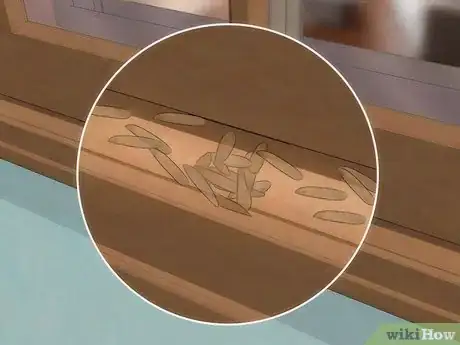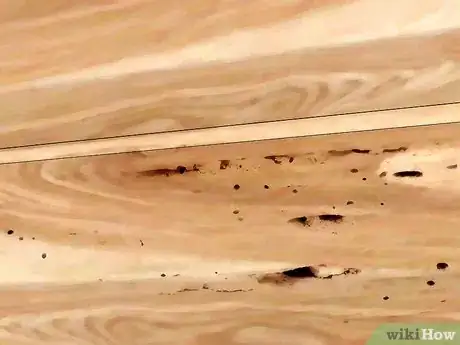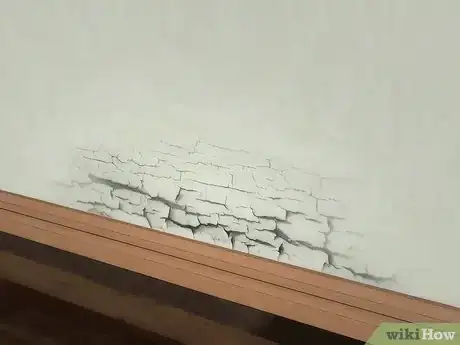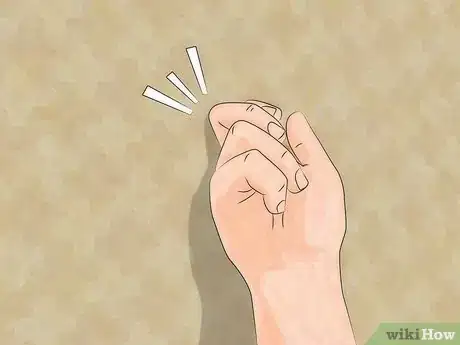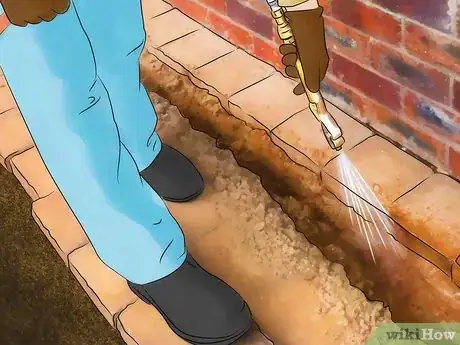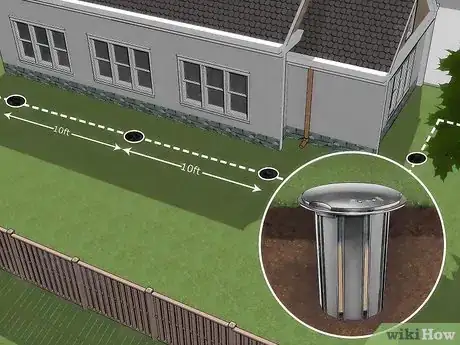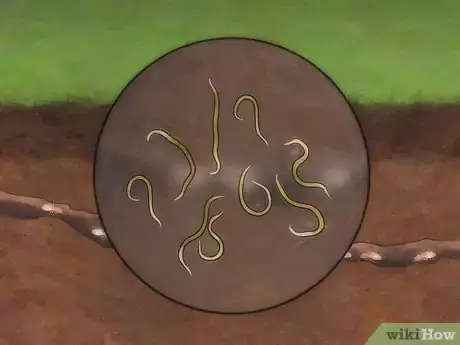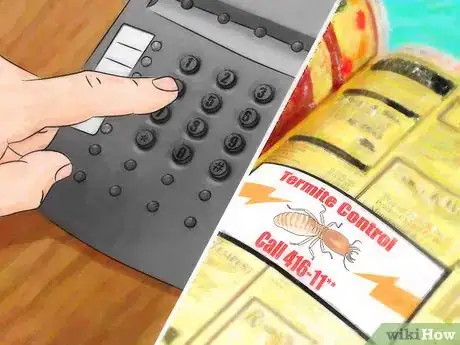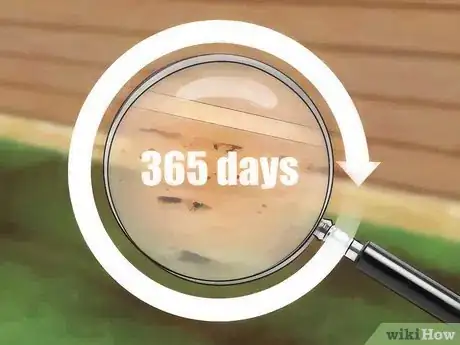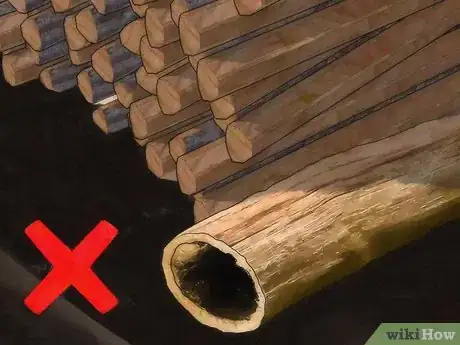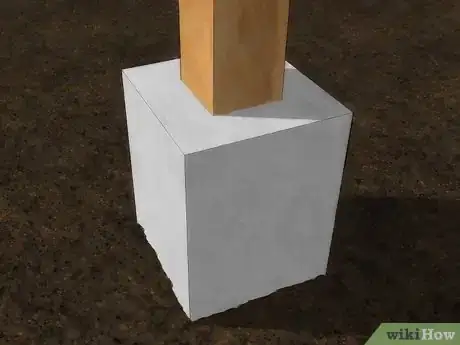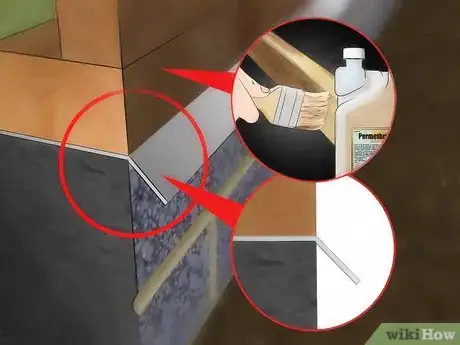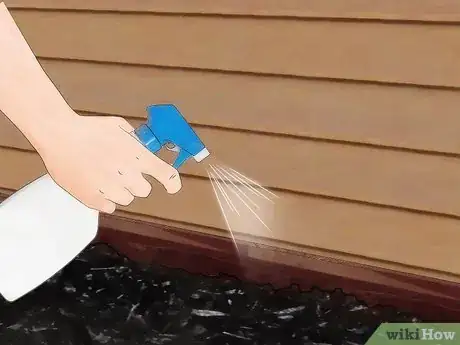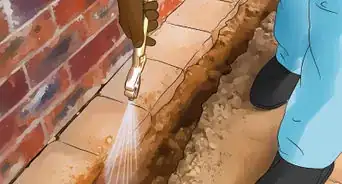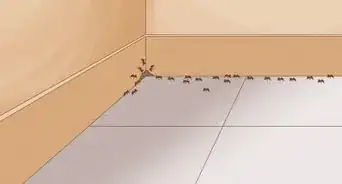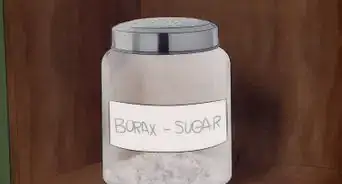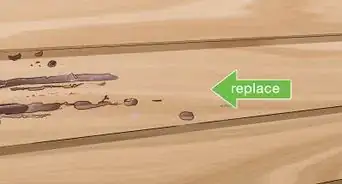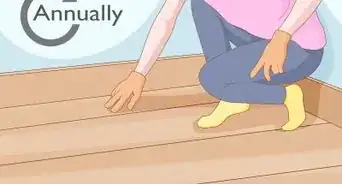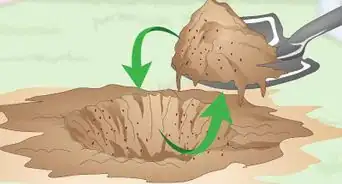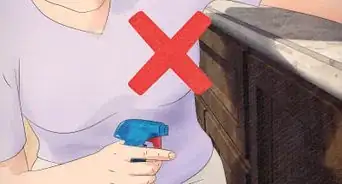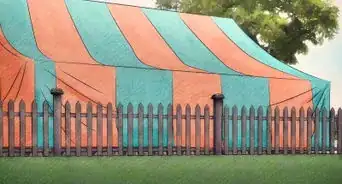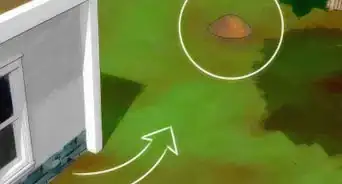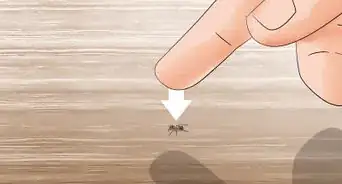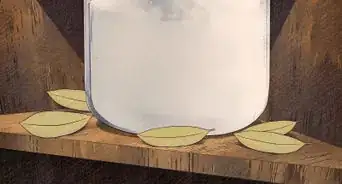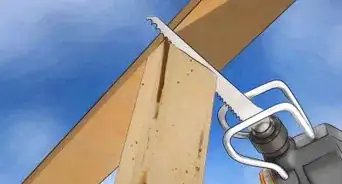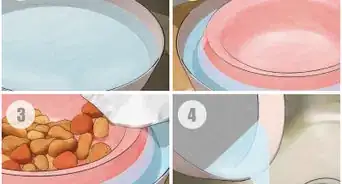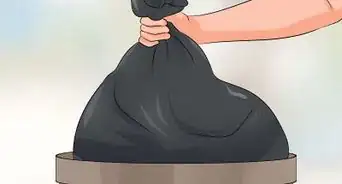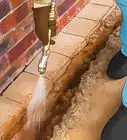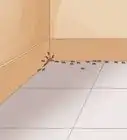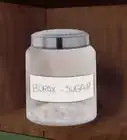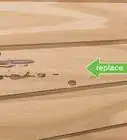This article was co-authored by Hussam Bin Break. Hussam Bin Break is a Certified Commercial Pesticide Applicator and Operations Manager. He and his brother Hussam co-founded Diagno Pest Control in the greater Philadelphia area in 2018, and have since expanded their services to include the New Jersey market. Diagno Pest Control has received Home Advisor's Top Rated and Elite Service Badges for quality of work and customer service.
There are 12 references cited in this article, which can be found at the bottom of the page.
wikiHow marks an article as reader-approved once it receives enough positive feedback. In this case, 92% of readers who voted found the article helpful, earning it our reader-approved status.
This article has been viewed 147,385 times.
Termites are insects who live below ground in colonies, and like to eat dead plants, trees, and wood. They also eat products made from trees, like paper, cardboard, and the paper backing on sheetrock. To a homeowner, an infestation of termites could be devastating, causing thousands of dollars in property damage. Both subterranean and drywood termites can destroy your home, but if you take the correct measures you can eradicate the termites you have and prevent them from coming back in the future.
Steps
Identifying a Termite Infestation
-
1Look for dead termites, termite wings, or termite droppings. These signs are a dead giveaway that you have a termite infestation.[1] Termites are similar in appearance to winged ants. Unlike ants however, termites shed their wings after swarming.[2]
- Termites will leave worm-like mud tunnels that are visible on the surface of walls within your house. These tunnels are used to protect worker termites.[3]
- To determine if it’s an ant or a termite, look at its antennae. If they are bent, this is a sign you have flying ants. If they are straight then they are termites.[4]
- Note that subterranean termites don’t leave droppings behind, as they use them to construct tunnels.
-
2Examine wood in your house for small holes or sawdust-like matter. Drywood termites build their homes in dry wood, much like their name suggests, while subterranean termites live in the ground. Look for sawdust-like material around any holes or cracks around your home.Advertisement
-
3Look for paint that has bubbled or cracked. Termite tunnels that run too close to the paint on the surface of a wall will leave blisters and cracks. This is a sign that termites have created colonies in the walls of your house.
- Common places to look include your door, window frames, trim, perimeter, walls, and baseboards, especially if your house is constructed of wood.
- Check any place in your house that contains wood if you suspect there are termites.
-
4Inspect your foundation and crawl space. Subterranean termites may try to make their home beneath yours. Check the inside and outside of your foundation, crawl space, and support piers for termites or damage.
-
5Knock on non-hollow walls to see if they’ve been hollowed by the termites. Termites are capable of breaking down cellulose in wood which creates a digestible food source for them.[7] Sometimes this can include entire walls.
- Solid walls should make a thud noise and sound like there is something behind it.
- If your walls make a hollow or echoey sound when you knock on them, there’s a good chance your walls are hollow and you have termites.[8]
Eliminating the Termites
-
1Create a barrier around your house using liquid termiticide treatment. A termiticide treatment will not only kill termites in the ground, but will protect your house from any termites trying to burrow into it.[9] Create a trench around the perimeter of your house, then spray termiticide in the trench to create a natural barrier.
- Be sure to carefully read and follow the instructions for using liquid termiticide to keep you, your family, your neighbors, and the environment safe.
- This treatment is a lot easier to perform when you are building a new house.
- Trenching may be necessary if your house is already built.[10]
-
2Use a termite bait to poison the entire colony of termites. Termite bait is a poison that slowly acts to kill termites. It also spreads the poison around the colony to eradicate the infestation.[11] Place the baits in a perimeter around your house, spread 10–12 feet (3.0–3.7 m) apart. Add additional baits in areas where there is high termite activity.
- Termite baits are made of cardboard, paper, or other cellulose material, with a lethal poison for termites.[12]
- You can use either above or below ground baits.
-
3Use nematodes to kill the termite colony. Nematodes are roundworms that can kill termites. Expose the termite colonies to nematodes by releasing them in areas where there is high termite activity.
- This is not always the most effective method of extermination. Nematodes have varying mortality rates depending on their environment.
- The Steinernema carpocapsae is one of the most effective types of nematode to eradicate termites and other wood borers.
-
4Call in a professional to remove the termites. While do-it-yourself methods may seem appealing, your best solution is to hire a professional to remove the termites. Look online for exterminators who specialize in removal of termites and their colonies. Make sure to read user reviews and choose an exterminator who has a good reputation.
- Calling in a professional may cost more money initially, but will save you money on repairing structural damage around your house.
- Talk about future prevention methods with the exterminator as well.
Preventing Future Infestations
-
1Get termite inspections done annually by a professional. A professional exterminator will typically have the knowledge to spot a termite infestation before it’s too late. The earlier you catch termites, the easier it is to deal with them.
- If you live in a densely wooded area, you may be more prone to termites.
- Make sure the service is part of the National Pest Control Association or your local or state pest control association.
- Ensure that the company offers a guarantee with their service.
-
2Remove cellulose-based debris from around your house. If you have any sort of organic material made of wood around your house, make sure you’re disposing of it. The longer it’s allowed to stay out, the more likely it will attract termites to your location.
- You can make compost out of your landscaping trimmings.[13] Breaking it down will prevent termites from infesting the wood.
- Another alternative is to contact your local municipality and ask about wood recycling in your area.
-
3Eliminate wood to ground contact in your house. Termites can enter your house easily if there is wood making contact with the ground. Some examples of this include a wood lattice, wood siding, and door or window frames that make contact with the ground. Anything made of wood should be at least 6 inches (15 cm) above ground level, to prevent termites from getting into your house.[14]
- You may have to put a concrete base on some wooded items on your house.
- Cutting off the base of wood lattice work that touches the ground will help you keep termites out of your house.
-
4Have your house pre-treated for termites. If you're building a new home make sure to consider getting your house pre-treated for termite prevention. It’s much easier to set a termite barrier with termiticide before you begin construction, by creating the barrier on the land where the house will be.
- If you live in the southwest U.S., you should highly consider this option, as this is where most termites are found.[15]
-
5Remove termite access by filling cracks in your house. After locating where you think the termites may be coming from, make sure to fill the holes and treat the surrounding area with termiticide to prevent further termite infestations. [16]
- Laying down termite poison around entry points will kill them before they can begin constructing new tunnels.
Expert Q&A
-
QuestionIs termite treatment effective?
 Hussam Bin BreakHussam Bin Break is a Certified Commercial Pesticide Applicator and Operations Manager. He and his brother Hussam co-founded Diagno Pest Control in the greater Philadelphia area in 2018, and have since expanded their services to include the New Jersey market. Diagno Pest Control has received Home Advisor's Top Rated and Elite Service Badges for quality of work and customer service.
Hussam Bin BreakHussam Bin Break is a Certified Commercial Pesticide Applicator and Operations Manager. He and his brother Hussam co-founded Diagno Pest Control in the greater Philadelphia area in 2018, and have since expanded their services to include the New Jersey market. Diagno Pest Control has received Home Advisor's Top Rated and Elite Service Badges for quality of work and customer service.
Pest Control Professional Yes, but you may need follow-ups. If you hire a professional to treat a termite problem, ask for at least a two year guarantee. This will allow you to have at least two seasons to make sure that you don't have termites anymore, and most of the chemicals right now will work for more than five years.
Yes, but you may need follow-ups. If you hire a professional to treat a termite problem, ask for at least a two year guarantee. This will allow you to have at least two seasons to make sure that you don't have termites anymore, and most of the chemicals right now will work for more than five years.
References
- ↑ https://www.orkin.com/pests/termites
- ↑ https://www.jcehrlich.com/termites/identification/
- ↑ https://www.orkin.com/pests/termites/termite-droppings
- ↑ http://www.doyourownpestcontrol.com/diff.htm
- ↑ https://www.orkin.com/pests/termites/termite-droppings
- ↑ https://www.jcehrlich.com/termites/identification/
- ↑ https://www.terminix.com/termite-control/termite-facts/
- ↑ https://www.terminix.com/termite-control/behavior/do-termites-make-noise/
- ↑ http://www.clemson.edu/cafls/departments/esps/factsheets/household_structural/subterranean_termite_control_hs01.html
- ↑ http://www.clemson.edu/cafls/departments/esps/factsheets/household_structural/subterranean_termite_control_hs01.html
- ↑ https://entomology.ca.uky.edu/ef639
- ↑ https://entomology.ca.uky.edu/ef639
- ↑ http://homeguides.sfgate.com/recycle-wood-79134.html
- ↑ https://entomology.ca.uky.edu/ef605
- ↑ http://www.biokids.umich.edu/critters/Isoptera/
- ↑ http://www.termites.com/damage/protection-prevention/termite-prevention/
About This Article
To protect your home from termites, use a liquid termiticide treatment all around the perimeter of your house. This will kill termites that are already in the ground and will also prevent more termites from burrowing into your house. If you suspect a colony has already been established, place termite bait at 10- to 12-foot intervals around your home. Depending on the type of bait you choose, you may need to place it either above ground or under the earth. If that doesn’t work, call a professional exterminator. For tips on how to prevent future infestations, keep reading!
